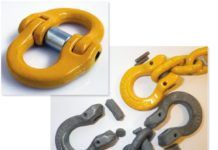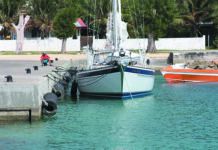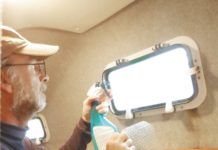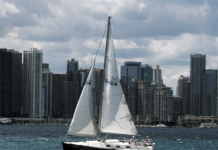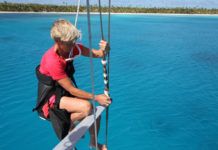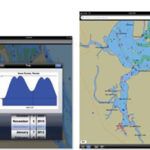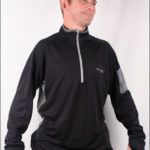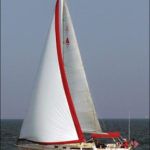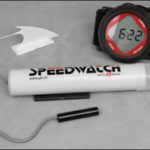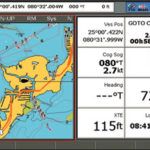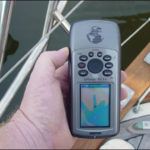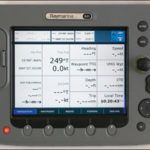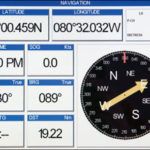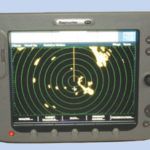Home Search
sunglasses - search results
If you're not happy with the results, please do another search
PS Sea-trials the iPad and Nav Apps
With many of the 38-million-sold iPads winding up on board boats, it’s no wonder there are hundreds of iPad apps that are well suited for the sailing life. This begins Practical Sailor’s three-part series on those apps. Part 1 of the series reports on PS’s field tests of multiple navigation apps—using raster and vector charts—to see how well they perform and how they compare to traditional navigation software. They review looks at the top performers: iNavX, iPad Navionics, and Charts & Tides.
Where Credit is Due: May 2011
Letters to Practical Sailor, May 2011. This month's letters cover subjects such as: BoatU.S. Insurance, Marinco, Rigging and More!
Sailing Apparel: High-tech Sun Protection vs. Thrift Store Buys
Take a glance around the marina: One in five Americans will develop skin cancer in their lifetime, one in three Caucasians. In past issues, Practical Sailor has delved into the risks of sun exposure and options for protection, including sunscreens (June 2007), sunglasses (July 2009), and hats (June 2008). For this report, we took a look at clothing designed to block the suns harmful ultraviolet (UV) rays. Fabrics create a physical UV barrier, a shield that is longer-lasting, more effective, and more reliable than sunscreens. Although all clothes offer some protection from UV, not all fabrics have adequate protection. Testers sought to determine whether a $50 shirt designed for sun protection is really a better choice than our stockpile of regatta T-shirts or a regular, dark-colored tightly woven shirt that can be bought at a thrift store. We tested the performance of a range of sailing-appropriate activewear from Coolibar and Columbia Sportswear.
Mailport: June 2010
The June 2010 issue featured letters on subjects such as: spiders, addition of color to handheld electronics, DIY boatyard recommendation and propane fridges.
Portable Sailing Tools for Tracking and Tuning Boat Speed
Practical Sailor recently spent a week experimenting with three handheld products geared toward performance sailors. These portable tools are for tracking and improving sailboat speed. Unlike conventional portable GPS units, which have relatively small displays and deliver a wide range of navigational data, these products display large digits that can be read from a distance, and the view options are limited to those that relate exclusively to speed and racing performance. Practical Sailor tested the Speedwatch and two GPS units, Velocitek SC-1 and SpeedPuck. These instruments make good training tools for young sailors and will give all around-the-buoy sailors the ability to quickly quantify performances.
Marine Electronics: Practical Sailor Reviews New Raymarine A-series Chartplotter-sounder
Sailors looking for a chartplotter who tend to stray from the beaten path or those who spend a fair amount of time fishing may want to consider a combination chartplotter-fishfinder. Our last look at plotter-sounders named the Garmin 545s the Practical Sailor Best Choice for combination chartplotter sounders. This review compares the Garmin to the new Raymarine A50D. Testers looked at display unit features, plotter features, and sounder features. The Raymarine unit uses Navionics cartography and can interface with AIS devices.
Marine Handheld GPS Test Update
The Delorme Earthmate PN-40 is one of the newest additions to the handheld marine electronics market. Practical Sailor evaluated the rugged, palm-sized Earthmate using the same tests used in past GPS evaluations to see how it matched up against the Garmin GPSMap 76CSx, our top performer in past tests. Testers used the unit for multiple days and rated key functions, battery life, lighting, waterproof quality, cold starts in multiple locations, and visibility under different conditions.
Marine Electronics Test: Garmin Touchscreen vs. Raymarine Network
Multi-function displays (MFD) with 8- to 12-inch screens are riding a wave of popularity, due in large part to the ease of viewability of detailed navigational data. Practical Sailor evaluated 8-inch screens from Garmin and Raymarine and the two companies’ 12-inch displays. Both units in the Garmin GPSMAP 5000 series, the GPSMAP 5208 and the GPSMAP 5212, are touchscreen controlled and can interface with radar, a black-box finder, a weather receiver, or an Automatic Identification System (AIS) receiver through a Garmin Marine Network connection. Both also come pre-loaded with Garmin Bluechart g2 U.S. coastal cartography. The Raymarine E120 and Raymarine E80 can connect to and display a variety of information from numerous sources. Testers liked the intuitive software and networking capabilities. Raymarine uses Navionics cartography. All four displays tested are NMEA 0183 compatible and NMEA 2000 compatible.
Practical Sailor Tests Standard Horizons Big, Bad CPV550
The across-the-board capabilities of the Standard Horizon CPV550, including VHF, GPS, and color chartplotting, required an extensive series of tests. Practical Sailor editors subjected the VHF to temperature extremes, radio frequency power output, frequency accuracy and power usage tests. We tested the huge 12-inch color display and rated it for user-friendliness and viewability under a variety of lighting conditions. We found the entire unit rugged and easy to read, with a wide range of capabilities. It performed on par with the best VHF radios, best chartplotters, and best GPS units that weve tested.
Radar Shootout
Furuno, Raymarine score; Northstar disappoints.











